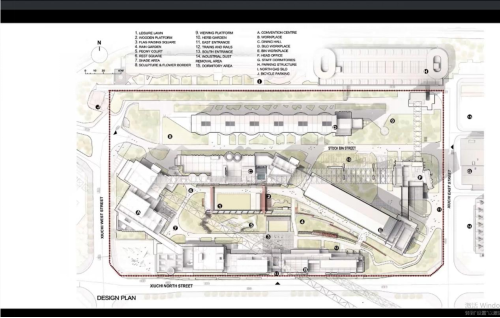(Reported by Yan Yuelin) At 19:00 on November 20, 2022, “A Genealogical Experience and Review of Jin’anqiao Area and Shougang Post-Industrial Landscape Practice”, a lecture on the 70th anniversary of China University of Geosciences (Wuhan), was successfully held in the School of Arts and Communication. Zhu Yufan, a professor and doctoral supervisor of the Department of Landscape Architecture, School of Architecture, Tsinghua University and a famous contemporary landscape architect, was invited to give the online lecture.
In this lecture, Professor Zhu Yufan vividly and clearly explained the creation concept and design connotation for the theme of “Jin’anqiao Section - Thoughts on the Post-Industrial Landscape of Shougang in China”. Taking the landscape synonymous of scientific revolution, the Enlightenment, the industrial revolution and the era of big machine industry as the starting point, Professor Zhu talked about the important impact and profound changes of the industrial transformation cycle of post-industrial society on the social landscape in human civilization process. Industrial power and natural power exist in a matching relationship between the primitive, and the magnificent industrial machine brings shock to people with the same frequency as the nature, so the understanding of the characteristics of industrial habits can be enlightening for the future work in related professions. The successful transformation of Beijing Shougang, as the lens of China's post-industrial era transformation, is symbolic and typical. Professor Zhu mentioned that the history of abandoned post-industrial sites is often hundreds of cultural relics. Thousands of years of history seem to be incomparable. It is the "youngest" part of history. It is precisely because of this "youth" that most of the carriers for feeling memory, from material media to the human being, have not yet been completely lost. It is also because of this "youth" that their value was once extremely neglected, so we see a great variation between those historical objects of post-industrial sites that survived intact and those that were completely "destroyed" before the design. Interestingly, for the condition of these remains after design, there is also the possibility of a full range between being left intact and being completely "destroyed", and the choice is ultimately made because of the judgment of its value in design. From this perspective, “post-industrial landscape” is the most representative and panoramic design type to explore the relationship between history and design.


At the end of the lecture, Professor Zhu mentioned that China's post-industrial revolution must form its own characteristics. Jin’anqiao as a moving industrial language, we hope to make more people perceive such a vocabulary through design to generate new cognition and new value points.
After the lecture, the teachers and students unanimously said that they had benefited a lot in their professional theoretical skills, increased their knowledge and broadened their horizons through this exchange and learning.